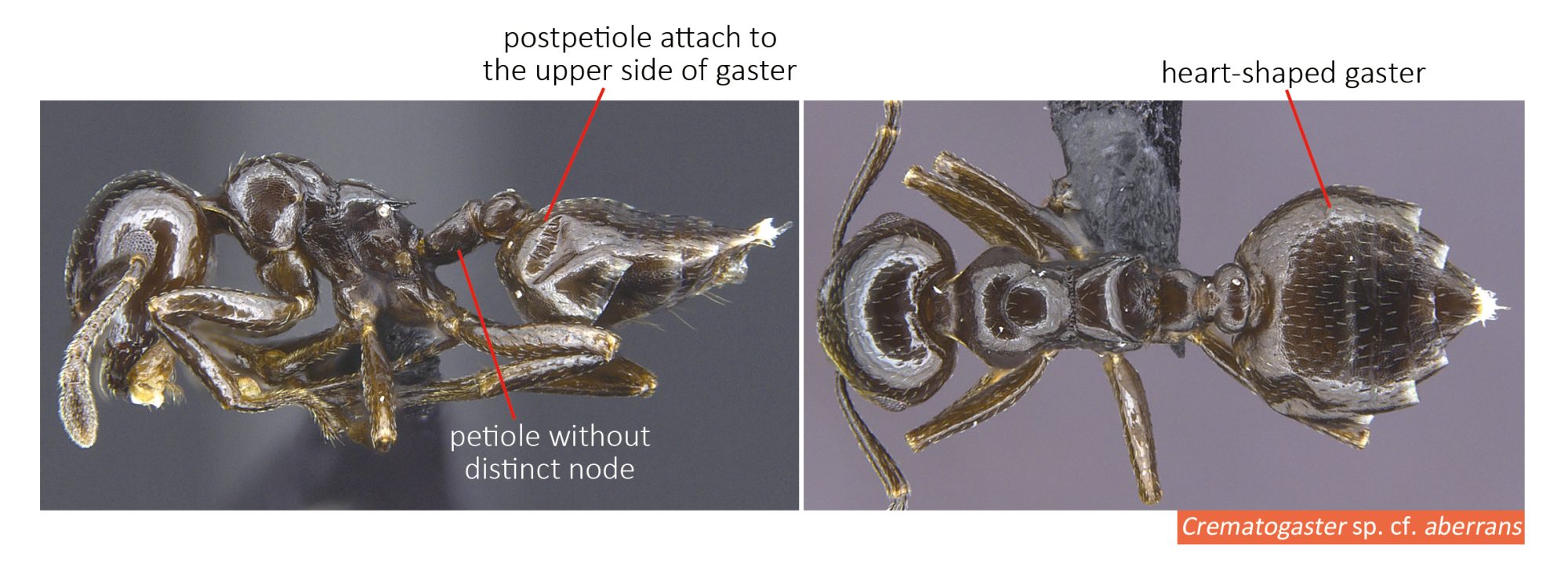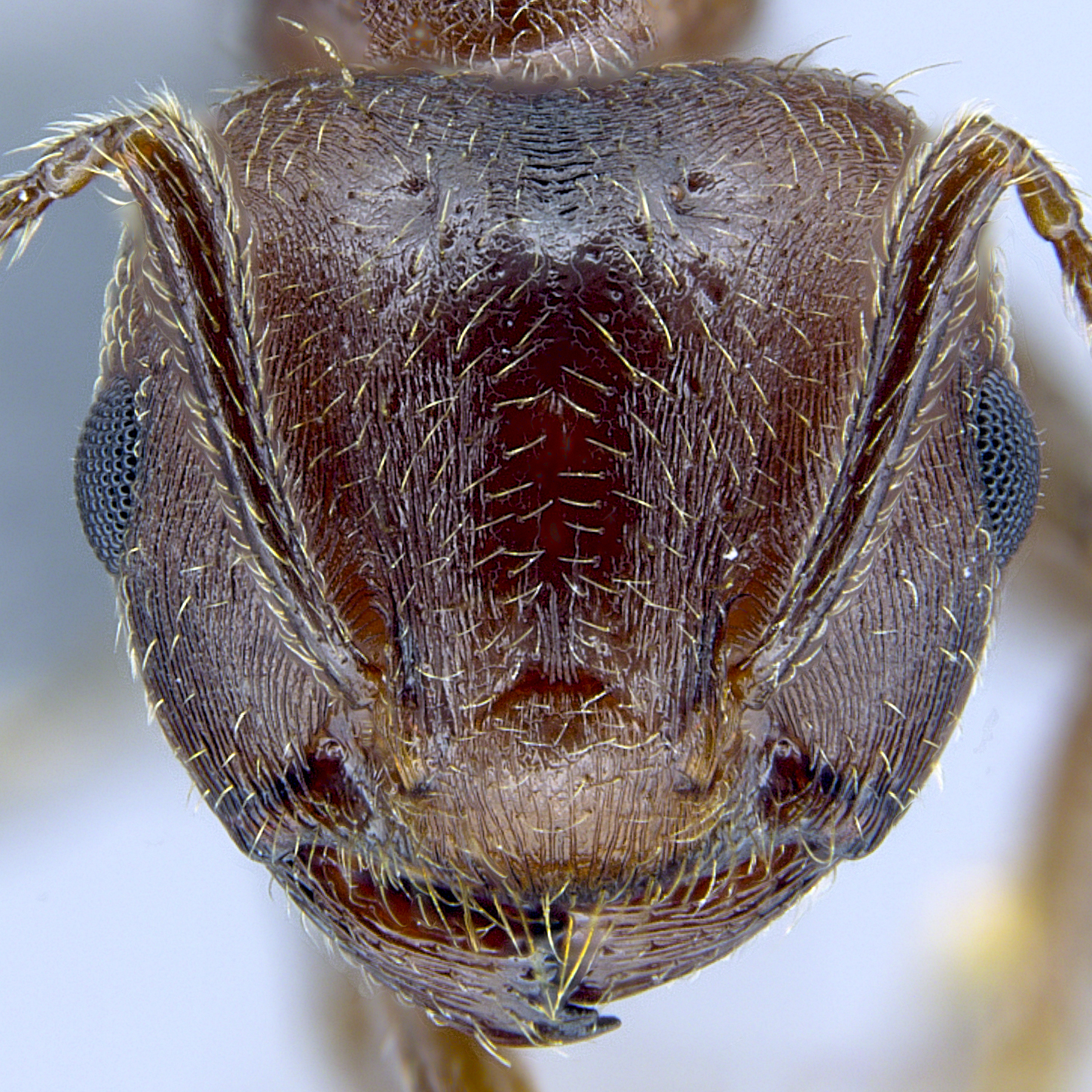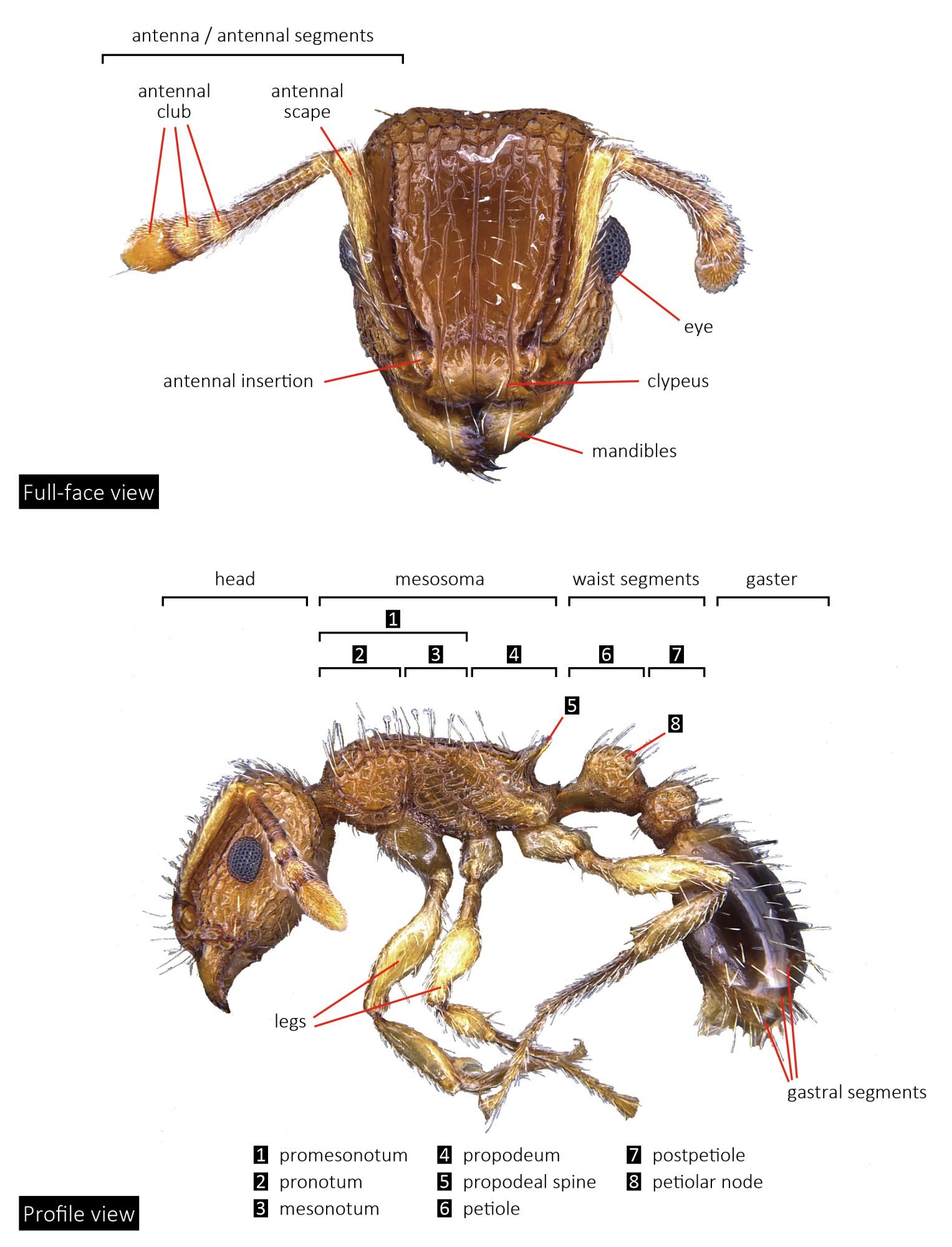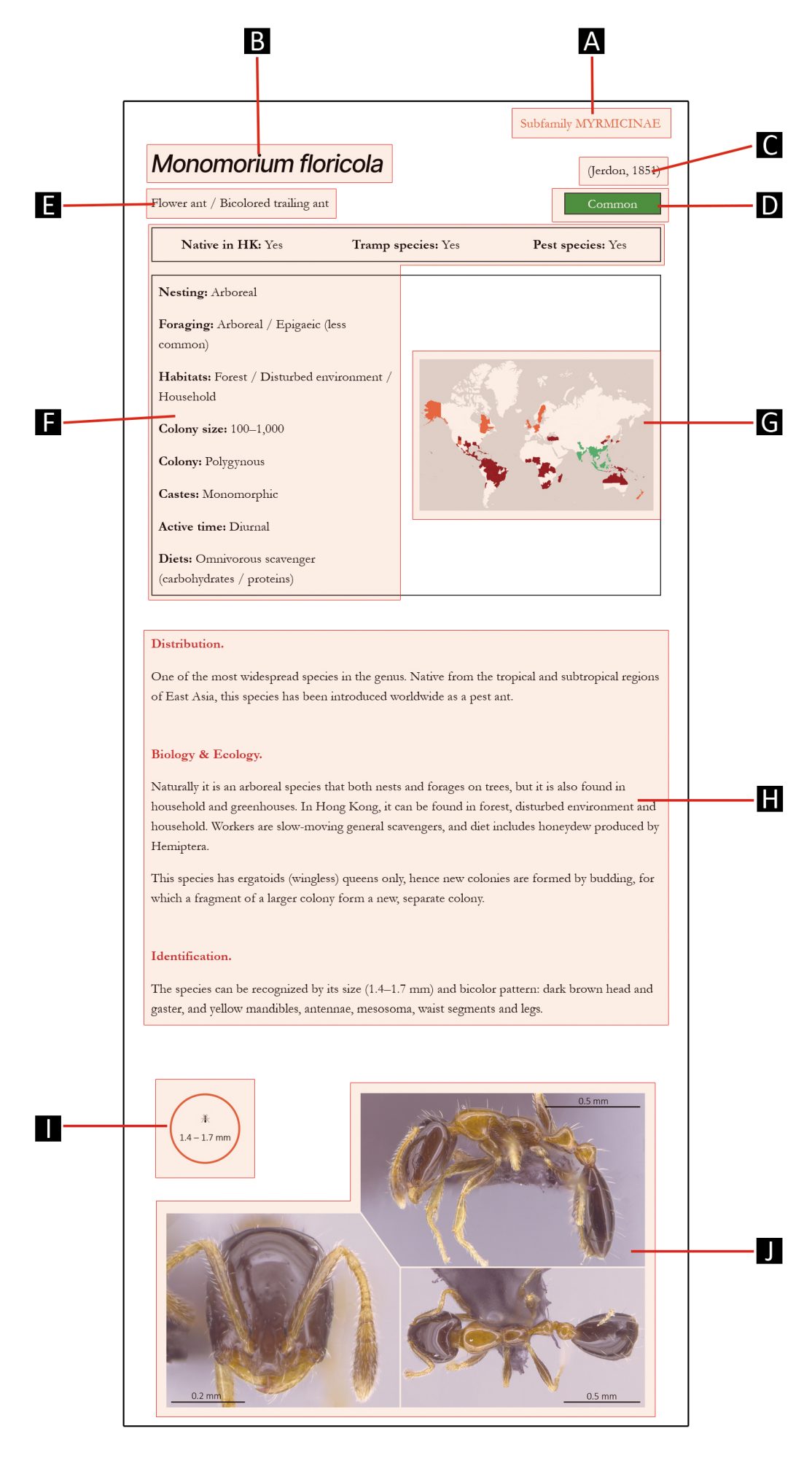
Subfamily MYRMICINAE
GENUS
Crematogaster
Lund, 1831
Saint Valentine ants / Cocktail ants / Acrobat ants
Distribution.
A very successful ant genus with 503 species described. The genus has a cosmopolitan distribution, with the exception of northern parts of the northern hemisphere.
Biology & Ecology.
Most Crematogaster species (particularly in the tropical and subtropical regions) are considered arboreal that both nest and forage on trees. Nests range from small to large, from just a few dozen of workers to over tens of thousands of workers, mostly forming facultative polygynous colonies (one or more egg-laying queen per colony).
Crematogaster species are mostly general scavengers, with diet includes honeydew produced by aphids, coccids or other Hemiptera. Many species are associated with myrmecophily and myrmecophyte plants, for they protect their host plants from herbivorous insects, while they are offered with nesting sites and food from the host plants in return.
Workers are often aggressive and territorial. When workers are alarmed, they raise their gasters above their bodies and point the stings forward.
Identification.
Crematogaster species are small to medium in size (3–6 mm), mostly with brown to dark brown coloration, but there is a diverse range of other colors as well. They can be easily recognized by the absence of a distinct node on their petiole, their postpetiole attaching to the gaster on the upper side, and the heart-shaped gaster.

Species in this genus






